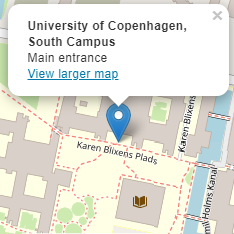Beastly Identification
Separating out innocent from murderous big cats in South Asia
Public lecture by Dr. Nayanika Mathur, University of Oxford.
Abstract
This paper asks how the act of hunting down a specified man-eater is dispensed with in a landscape in which several big cats co-exist, most of which are not man-eaters? How is certain knowledge of the guilt of a big cat arrived at anterior to its killing?
This talk constitutes a study of the various methods through which hunters, bureaucrats, locals, scientists, conservationists, and other actors identify a specific, individual man-eater. This ranges from bureaucratic talk of IDing to scientific speak of camera trap images, fecal analysis, DNA tests to a “territorial thesis”. I contrast these to the lived, embodied, visceral practices that are actually operationalised in the hunt. I show the criticality of correct identification of a man-eater subsequent to the passage of the Wildlife Protection Act of 1972, which makes a criminal offence any killing of a tiger, lion, or leopard that has not been declared a man-eater. The question I ask here is what difference has the legal protection of big cats and the creation of a new state document – the hunting permit – that regulates killing effected to the project of managing man-eaters. This chapter explores the vexed twin issues of correctly identifying a particular big cat as a man-eater and the state’s response to its own accidental – and illegal – killing of an innocent big cat. It describes the complicated game of retrospective erasure that need to be played – involving the disappearance of various matter ranging from the body of the big cat to photographs to the silencing of accomplices and members of media – in order to paper over the illegal death of the innocent big cats. I stress the point that all shikaris make, which is the inherent impossibility of ever being able to incontrovertibly identify a big cat prior to killing it.
Yet, given the transnational drive of preserving big cats and in the context of India’s own conservationist legal regime the hunting permit and associated documents remain on, often as impediments to swift action and always as a necessary fiction of the reasoned government of big cats.
Bio
Nayanika Mathur is Associate Professor in the Anthropology of South Asia and Fellow of Wolfson College at the University of Oxford. She is currently writing a book on multispecies ethnography, climate change, and human-big cat conflict in the South Asian Anthropocene. Her previous work was centred upon ethnography of bureaucracy, welfare, the state, and law. She is the author of Paper Tiger: Law, Bureaucracy and the Developmental State in Himalayan India (Cambridge, 2016) and the co-editor of Remaking the Public Good: A New Anthropology of Bureaucracy (Cambridge Journal of Anthropology, 2015).

